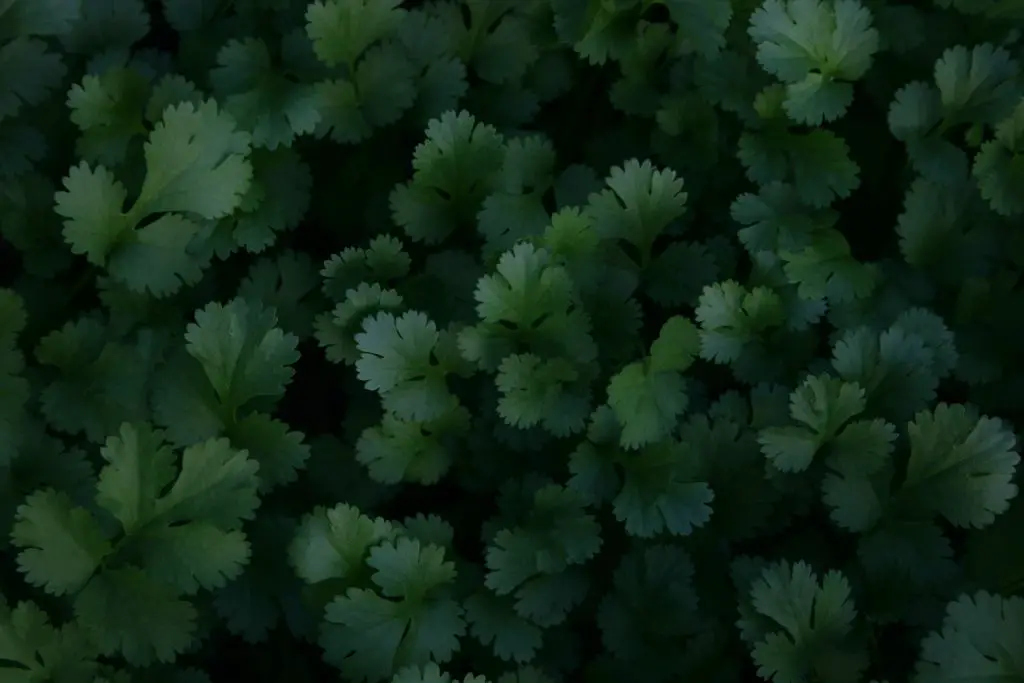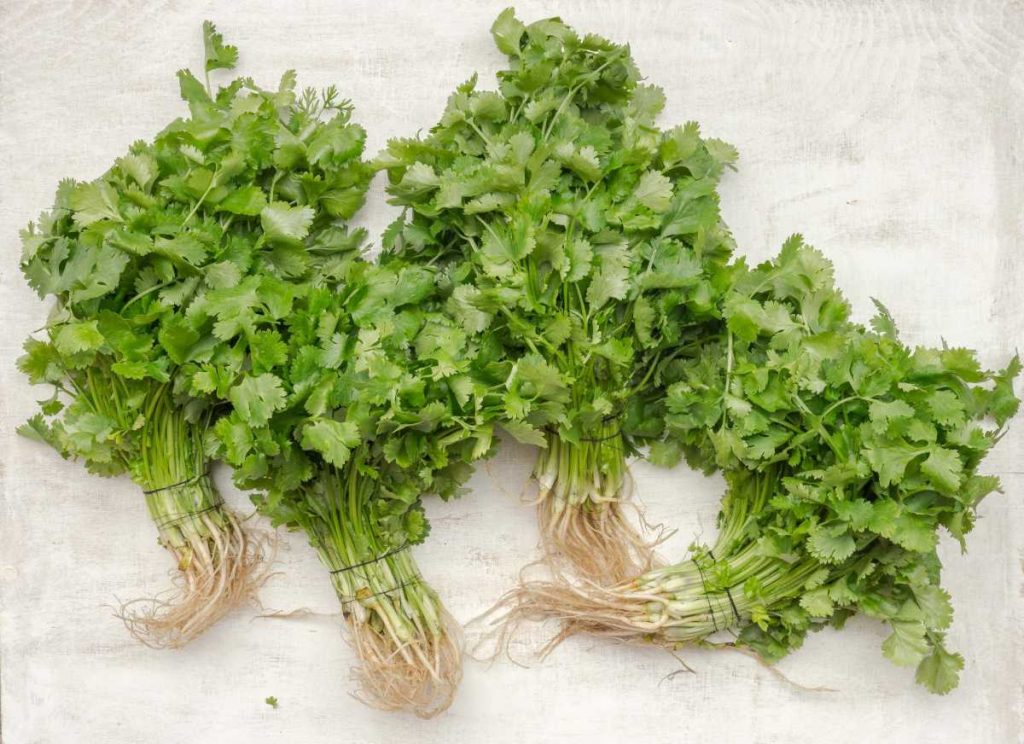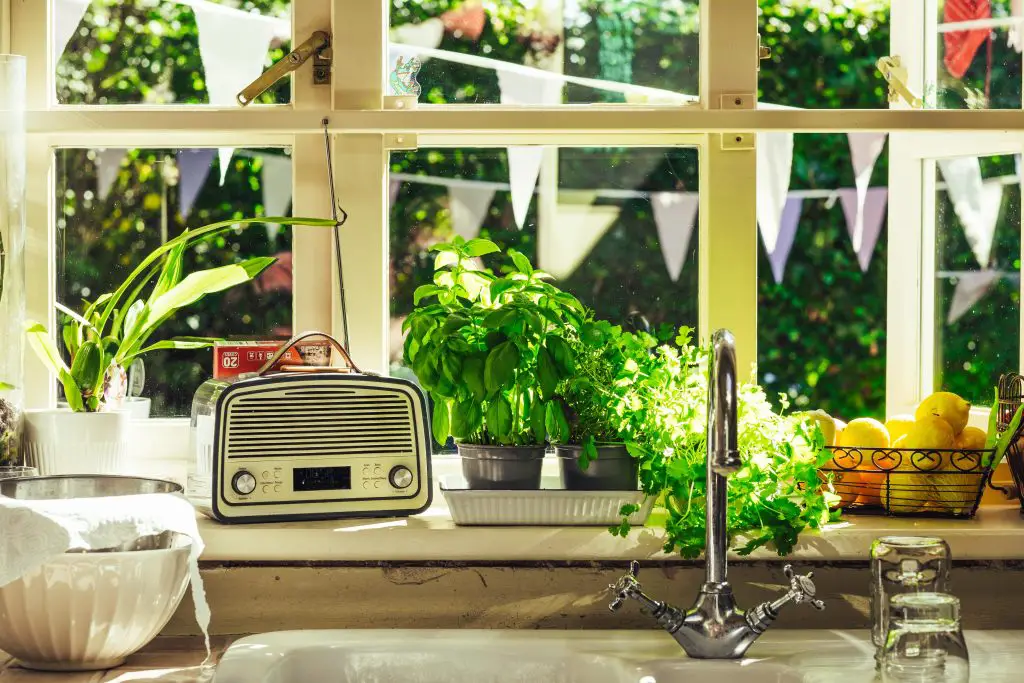Can You Plant Coriander Seeds From The Grocery Store? In the cooking aisle at the local grocery store, you will find that Coriander Seeds are available as whole seeds and also in a ground form. The cost of seeds is substantially lower than purchasing them from a garden centre, so obviously the question is – Can I Plant These Seeds In The Garden?
The answer to this is yes, it is possible to plant Coriander Seeds from the grocery store and they will produce bunches of Coriander (also known as Cilantro) that you can use in your cooking. However, the germination rate of these seeds may vary, due to the age of the seeds, which is unknown.
According to Clear Creek Seeds Coriander Seeds will remain viable for around 5 Years. However, the conditions under which seeds are stored can significantly affect how long they last. The seeds are best stored in a dark, dry and cool environment, below 10°C (50°F) is ideal.
However, given that there is no “best sown before” date on seeds from the grocery store, it is impossible to know how old the seeds are, so the viability is always questionable. Additionally, it is extremely likely that seeds have been exposed to temperatures well above 10°C (50°F), if stored in a spice rack in the kitchen.
To ensure that the seeds are suitable for planting, a seed viability test may be conducted.

How To Conduct A Seed Viability Test
To conduct a seed viability test you will need paper towels, water and a
sealable plastic bag or container. Below are the steps that are required.
- Start by moistening a sheet of paper towel. It should be damp, but not dripping wet.
- Place the seeds onto the towel and fold the paper towel over the top of the seeds, so that they are completely covered.
- Place the damp paper towel into the plastic bag or container and seal it. This will ensure that the towel and seeds remain moist.
- Place the plastic bag or container somewhere inside your house that is reasonably warm. Temperatures around 20°C (70°F) are ideal.
- After about 7 Days you should be able to see signs of germination, in the form of sprouts. Generally, if there is no sign of sprouts after 10 Days, it is normally safe to assume that the seeds are not viable.
- If seeds have germinated there is no need to waste them. They can be planted into soil and continue growing.
How To Grow Coriander
Coriander is a relatively easy plant to grow from seed. It is best planted in Spring or Autumn in most regions, as it has a tendency to bolt readily as the weather warms up. It is best to start seedlings in modular trays with 2 to 4 Seeds per cell using seed raising mix which can be purchased from many different retailers or online through Amazon. Seedlings will take around 4 to 6 weeks to reach a size that is sufficiently large to plant them out into the garden.
When planting the seedlings out, it is best to plant at least some of the plants in shade, as this will slow down how quickly the bolting occurs. However, it will not stop the plant from bolting but it will increase the useful life of the plant, allowing bunches to be picked for a greater period of time. Additionally, “slow bolt” varieties can be purchased from Seeds Now in the US and Thompson & Morgan in the UK which will help to some degree to reduce how quickly the plant goes to seed.

When planting seedlings out, they should ideally be spaced 20 cm (8 inches) apart into a rich, moist well drained soil. As a general rule, we recommend using the No-Dig Method to prepare soil, as it is simple, quick, suppresses weeds and will provide the plant with all the nutrients required.
For those unfamilar with the No-Dig Technique, it requires the gardener to place a layer of compost onto the soil, 5 to 10 cms (2 to 4 inches) thick, once a year. This layer should be spread evenly over the surface but not dug into the soil. The Coriander can be planted directly into the compost layer and no other fertilisation is required. To read more about the No Dig Technique click here.
Once the Coriander Plants are transplanted into the garden, it will take a few weeks before the first harvest can be taken. During the initial period of growth, it is recommended that the seedlings be protected against slugs and snails. This can be done by sprinkling snail pellets around the base of the seedlings.
Alternatively, Cloches may be used to provide a physical barrier against attack. 2 Litre Plastic Milk Cartons with the base removed are ideal for this purpose or they can be purchased from Amazon. However, Cloches can increase the temperature around the plants, increasing the chances of bolting. As such, it is best to use them only in the very early or very late stages of the growing season, when temperatures are lower.
The timing of the first harvest is only limited by the size of the leaves, however, it best to only remove some of the leaves when harvesting. The reason is that leaving some leaves will allow Photosynthesis to continue, which help the plant to recover.

Due to the tendency of Coriander to bolt, it best to sow successional crops approximately 4 weeks apart, to ensure a constant supply. Sowing can continue up until mid Autumn as Coriander is extremely hardy and will survive frosts. The plant can survive at temperatures as low as -12°C (10°F), though protection is still recommended to ensure the quality of the leaves.
Collecting Coriander Seed
One of the few advantages of Coriander’s tendency to bolt, is that it is extremely easy to collect large volumes of seed, which will be more than enough to meet your garden and culinary needs, throughout the year.
To collect seeds, allow the plant to flower and then form the seeds. The seeds will be ready to harvest when the stems begin to change colour from Green to a Straw like colour. The easiest way to collect the seeds is to place a plate underneath the seed heads. Remove the seeds by running your hand up the stems, which will cause the seeds to fall onto the plate.
To ensure that the seeds are fully dry, it is best to place the plate in a warm, dry place for a week or two. Once fully dry the seeds can be sorted by hand to remove any chaff before being stored in an airtight glass jars. They will store for an extended period of time, until you’re ready to plant or eat them.
